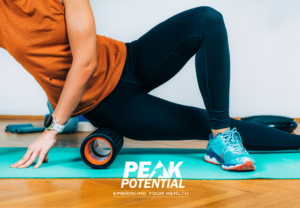
As we see runners ramp up their mileage for the fall running season – especially those training for the St. Jude Marathon – we can always expect to hear an increase in “shin splint” complaints.
Shin splints, technically referred to a medial tibial stress syndrome, is a generalized term for any pain on the front of the shin. It’s a very common injury among runner, joggers, and even walkers. Although it is common, it is not a normal part of training and are often a warning sign of another injury that has gone unaddressed.
This type of pain often occurs when people return to exercise after a period of rest and when mileage or intensity or increased too rapidly. Other causes include excessive hip motion, being overweight, previous injuries resulting in compensatory patterns, and top of the list is muscle imbalance.
A muscle imbalance occurs when one muscle is stronger than the other, but they are required to work together. Most obviously with shin splints, the back of the calf muscle, which is much larger, is stronger than the smaller muscle on the front. It should not be overlooked though that muscle imbalance above the, hip, back, or ankle could be contributing to the problem as well.
Whatever the cause, there are ways to decrease your risk of experiencing the pain of shin splints. Here are our top 6 tips for prevention:
-
Pace Yourself
Overuse is the most common cause of shin splints, so increase the intensity of any workout gradually. This is really true for any exercise or training program you begin. The recommendation for runners to safely increase their distance is an increase of ten percent or less a week.
-
Examine Your Footwear
Ensure your shoes are appropriate for your chosen activity, provide the right amount of support for your foot, and provide adequate cushioning. Keep them in good shape as well, the support and cushioning often wear out more quickly that we would think. Runners usually need new shoes about every 500 miles.
-
Consider Orthotics
People with flat feet (that’s me!) are more vulnerable to shin splints. That’s also true if your feet pronate or supinate, meaning they twist in or out. You can find various arch supports at the drugstore, but we recommend see a professional for prescription orthotics specially fit to your foot. This one thing might make the biggest difference in the shortest amount of time. Learn more about orthotics HERE.
-
Change Workout Surfaces
Examine your workout surfaces and find ones that absorb impact like grass and sand. Avoid concrete when possible, which may be lurking under the flooring of some exercise studios. Running downhill or exercising on a slanted surface also increases the pressure. These things can’t always be avoided, but changing things up even occasionally can result in big benefits.
-
Be Consistent
Playing basketball once a month or just running to catch a plane can put a lot of stress on your shins. The key to muscle balance and preventing overuse injuries is be consistent with exercise, so when you run outside for a family football game after Thanksgiving dinner your body is ready. If you’ve been sedentary for a while and plan to begin a walking or running program, start out slow.
-
Warm Up Properly
Gentle activity during a warm up raises the temperature in your muscles and makes them more elastic and less prone to injury. Heel and toe raises are especially helpful for building up your capacity when it comes to shin splints. Warm up should include dynamic – gentle movement – activities as opposed to prolonged muscle stretching that you would do at the end of a workout. .
Although shin splints are a common form of exercise injury, there are many ways to stay active while lowering your risk. Always work out at a steady pace and allow yourself adequate time for recovery.
Next week we will talk about how to heal shin splints if they are already a problem for you. But don’t wait! If you feel any pain start creeping in, set up a call with one of our doctors of physical therapy for more individualized tips.




